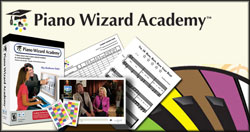OK, that was fun. Seriously, there is a real path to learning music through modeling or mimicking. We are visual creatures and it plays to that strength.
My background is in music and linguistics, but I am fascinated by how people learn, and convinced that music can and should be a birthright to all people. Here is the first of a few essays on different modes and styles of learning.
Modeling is one of the primary ways we learn, and being able to mimic in real time is a huge help, so any videos that let you play, sing or dance in sync help because you can anticipate and coordinate with the visual cues to play on time. This is a very natural pathway to learning. When I did my thesis work in Brazil, I studied very complex sacred African rhythms, and only by watching and mimicking (modeling) could I learn these complicated pieces.
I found anticipation to be the most vital clue, I could see the beginning of the movement and time my hitting the drum more exactly with theirs. In fact, visual cues abound in music making when you look for them. Think about the mirrors in dance classes, they are not just there for form but for people to be able to visually track the timing of the others and coordinate the rhythm of their movements.
Dance is the mother of rhythm in most cultures, the first experience most people have coordinating and timing rhythmic movements. The great piano player Professor Longhair started out tap dancing as a child, kids in Brazil samba in their diapers, it is a great place to start, and so pay attention to the visual cues.
Most people look at music as primarily auditory, but the visual is obviously extremely helpful in the learning phase. There are several reasons that make sense to me for this.
A) Many people are visual learners, either partly or predominantly.
B) You cannot hear a sound coming, in other words, by the time you hear the sound you are too late to join. Same with smell, taste, touch, all are senses that don''t have a sense of anticipation. Only sight lets you see something coming or be able to "visually entrain" on a beat, dance move, target, etc.
C) Visual information is much more complete, for example how someone plays the congas, with the palm, on the edge, bouncing off or slapping to dampen, etc. So in addition to when, we see how, and usually we can see the context as well.
Given all these advantages, it is surprising that people do not leverage the visual cues more when learning music. Even a deaf person can learn to play music just using visual cues. The only area they would really be challenged is dynamics, but even that they could detect from hand movement.
While Beethoven did not learn music while he was deaf, he did conduct and continue to teach well after that, relying no doubt on visual cues primarily to keep track and correct.
Open your eyes and see the music all around you, then just follow the leader. You will see an instant burst in competence.
[et_bloom_inline optin_id="optin_5"]


